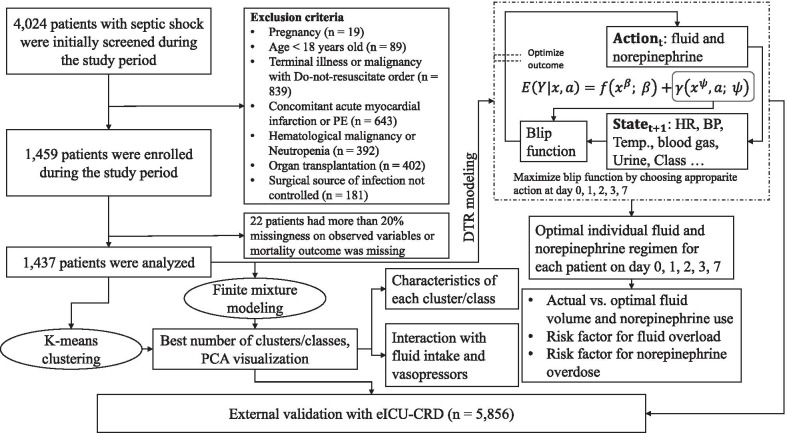Fig. 1.
Flowchart of patient enrollment and schematic illustration of analysis workflow. A total of 1437 septic shock patients were analyzed. The first step is to identify classes of septic shock by both finite mixture modeling and K-means clustering. Clinical characteristics of each class were compared. Interaction between class membership and fluid volume or epinephrine dose was explored in a multivariable Cox model with time-varying covariates. A significant effect of interaction means different therapeutic effects across classes. Another thread of our analysis is to estimate optimal fluid volume and norepinephrine dose using dynamic treatment regimen. The key of the modeling is to construct a blip function that can help to tailor optimal dosing strategy based on current patient status and historical response to the intervention. It returns a sequential decision policy to optimize the final outcome. The optimal fluid volume or epinephrine dose was then compared with the actual strategy, and relevant risk factors can be explored for fluid overload or norepinephrine overdosing

